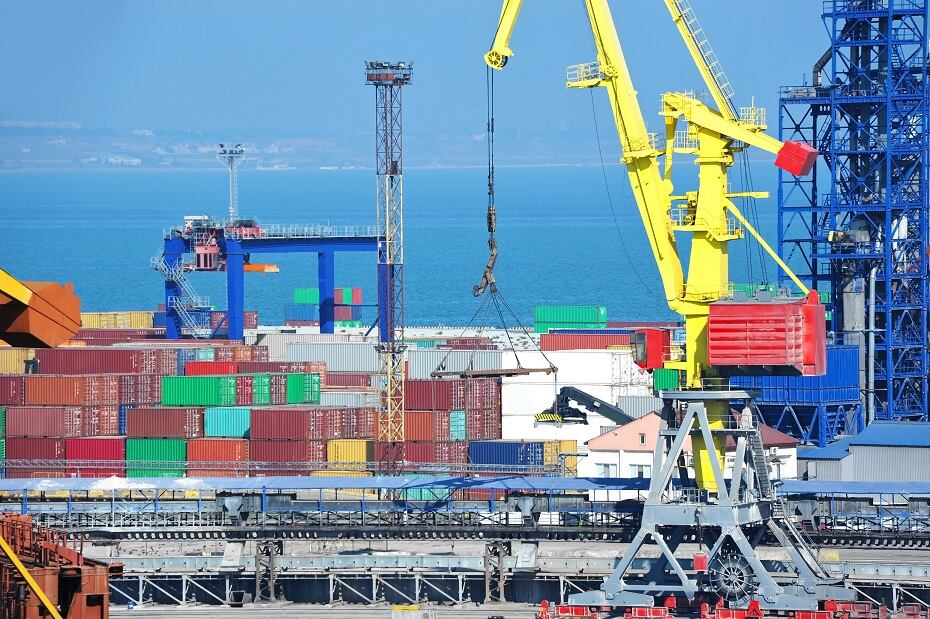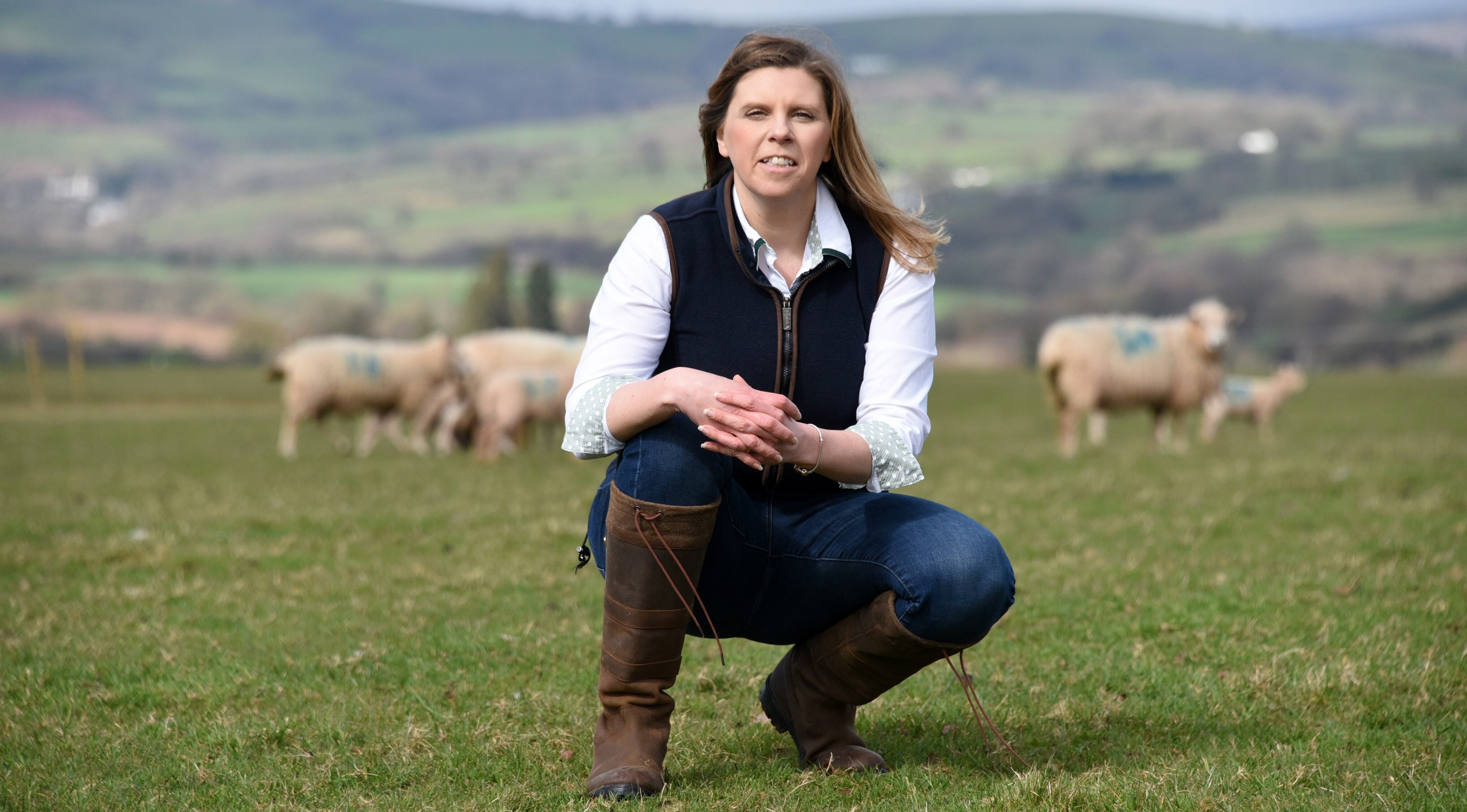Many UK food and drink exporters have had a rough ride since the start of 2020. Some free trade deals have been struck since the UK agreed to leave the EU, notably with Japan, Australia, Norway, Iceland and Liechtenstein, with a free trade deal agreed in principle with New Zealand. UK lamb exporters are also optimistic after the US agreed to resume imports from the start of this year. However, all this combined trade is small fry in comparison with the blow taken to exports to the EU, which remains the UK's largest export trading market.
“The past two years have been hideous for two major reasons: Brexit and COVID,” says David Hill, managing director of Cocoda, an exporting broker for the chocolate, biscuit and confectionery sectors.
“The problems created by Brexit have been exacerbated by the pandemic and the former has been used as a cover for the latter.”
Although there is some cross over, the main difference between these two phenomena is that COVID-related challenges should evaporate with the virus, whereas Brexit-induced issues are more prolonged.
This distinction is apparent in UK Food and Drink Federation figures. The trade association’s data shows that by mid-2021, non-EU exports had almost bounced back to pre-COVID levels, driven by a return to growth in China, Singapore, Australia, Japan and the Gulf Region. However, in the first nine months of last year, overall sales of UK food and drink were down £2.7bn compared to pre-COVID levels, mainly because of a sharp drop in sales to the EU. Germany, Italy and Spain were the worst-hit markets.
Meat-substitute manufacturer Quorn Foods exports to 16 countries worldwide, with exports accounting for 25% of its business. Comments from the company’s head of logistics, Christophe Evo, demonstrate how the container shortage issue - which directly relates to the pandemic - is affecting its worldwide export business, while Brexit is impacting exports to the EU.
“Operationally, markets such as the US, Australia and New Zealand are the most challenging to supply at the moment due to the shortage of sea containers,” notes Evo. “However, in terms of practicality, EU markets are now more challenging because of the additional documentation required following Brexit."

Getting on board with Brexit
Since Brexit, onerous documentation requirements have become one of the biggest obstacles to exporting to the EU.
In addition to needing an EU Economic Operators Registration and Identification number - obtained from any EU member state's tax authority - UK exporters have to provide a myriad of paperwork, from additional information on invoices to certificates of origin.
A phytosanitary certificate (PC) may be needed to export fruit, vegetables, plants and plant products used as food. A certificate of free sale may be needed to export processed food to non-EU countries.
Food and drink exports to or through the EU or Northern Ireland containing products of animal origin, such as animal fats, egg, dairy produce, honey, blood, bones, or items derived from seafood and meat, require export health certificates (EHCs). All exporters require an official veterinarian or local authority inspector to approve all EHC applications. The Animal and Plant Health Agency provide the vet or inspector with the EHC to sign and date.
Government guidance has been constantly updated to reflect the gamut of red tape.
Yet last January, it was EU customers rather than UK producers who weren’t ready for the changes, according to Hill. “UK manufacturers had been preparing for Brexit since the referendum – they knew what they needed to do to adapt to the new systems and they were ready.
“Customers in Europe weren’t prepared; we had to ask them what paperwork they needed to facilitate smooth transit and acceptance of goods.”
Oatcake manufacturer Nairn’s was one UK exporter that had all its ducks in a row ready for the 1 January deadline.
Katie Birrell, the company’s head of international sales, recalls: “We were as prepared as possible for Brexit and understood the requirements in advance of January 2021.
“The most challenging issue was agreeing terms with customers, as it became more complicated for our customers to import under certain terms after Brexit.”
While acknowledging the ‘arduous’ requirements for the EU, Nairn’s hasn’t been deterred from continuing to focus heavily on exports to the region, she says.
“The EU is key to our international business. About 50% of our export sales are in the EU and we still see a huge opportunity for growth in key EU markets such as Germany, Spain and France.
“The US, China, Finland and The Netherlands experienced substantial growth in our last financial year and are showing further growth this year.”
However, in Hill’s experience, not all EU customers have been willing to take on board the post-Brexit complexities of dealing with UK producers. “The response from some was that they had 26 other European countries they could import from without the hassle.”

Lack of harmonization
What’s more, in practice, the administrative burden on UK exporters has been compounded by inconsistencies in the way different EU countries and border control posts have interpreted the requirements.
“While exporting to some EU countries has become more straightforward over time, others have been inconsistent in their information, labelling and declaration requirements, which has added to exporters’ frustrations when they are taking all possible steps to be compliant,” notes Nicola Thomas, director of the UK Food & Drink Exporters Association.
In Hill’s experience, exporting to Germany has been relatively straightforward, whereas Spain and Romania have proved more difficult to deal with. “Even if the process runs smoothly the first time, it’s no guarantee that subsequent transactions will. You might get an over-zealous customs agent or a new problem might crop up. It’s a constantly changing picture.”
Strangled by red tape
For many smaller businesses, the barriers to selling into the EU have proved insurmountable.
Phil Hadley, international market development director at the Agriculture and Horticultural Development Board, says: “The increased customs requirements are not only causing additional hassle for UK exporters, but they are also proving more costly.
“The requirements are the same whether a company is exporting a pallet of product or a container and as a result, many smaller companies have ceased exporting directly as it’s simply not profitable.”
It’s not just about the cost and complexity of providing the correct documentation. The costs that ensue if there are customs issues; delays at borders can result in huge haulage bills, orders being cancelled and perishable items having to be destroyed.
As Hadley explains in relation to the animal produce industries he represents: “Delays at the border are a significant barrier for exports of fresh supermarket packs of specific cuts with short shelf life, which will be the highest value trade.
“This is less of an issue for exports of frozen carcasses, which will be of lower value and have a much longer shelf life.”

Vexed by vet shortages
For products that also have to be accompanied by an EHC, border delays are being exacerbated by the shortage of vets, Hadley says.
“At present, the industry is dependent on a relatively small number of vets to produce EHCs to attest to the integrity of the exported products.
“The process of completion is time-consuming. This results in increased cost, but also strain on staff resources. As such we need a team of qualified vets to undertake this work on an ongoing basis to support exports. Issues around EU exit and COVID have put the system under a great deal of pressure.”
This is something of which Quorn, for whom the EU is an important export market, has first-hand experience. “One of the main barriers is the lack of veterinary officers in the UK, who are needed to provide health certificates for food exports,” says Evo. Even Quorn - well-known for producing vegan and vegetarian foods - needs the EHCs because some of its vegetarian products contain products of animal origin, specifically very small amounts of egg albumen or milk protein.
“In a digitised world, these certificates are the only original documents which actually have to travel with the goods. Everything else can be sent electronically.
“This can lead to issues at border control points with document losses or even certificates being rejected because of legibility of handwriting.”
However, there are indications that this burden at least could soon be alleviated with the Government’s plans to introduce electronic documentation. “We are aware that the Government is now investing in a digital system for exports,” Hadley says.
Nevertheless, these are dark times for UK companies exporting to the EU, and Hill says it’s hard to see how the situation will improve without a single market or a customs union.
Quorn’s Evo concurs: “We need a proper free trade deal with the EU, which removes the red tape and current administrative barriers to trade.”

Container crisis continues
Outside of the EU, container shortages are still causing major issues for exporters. 2020 and 2021 saw a relentless surge in shipping prices, with huge consequences for UK exporters.
“Being a relatively small player, securing space on vessels can be challenging and we don’t expect it to improve until midway through 2022,” says Nairn’s Birrell. “The massive increases in cost of freight are also proving challenging.”
In addition, logistics specialist Rhenus says the air freight industry is reporting problems across Europe’s major hubs, including Amsterdam, London, Brussels, Frankfurt and Liege, due to high demand pressures, labour shortages and COVID-19 restrictions.
Closer to home, Rhenus says there’s some good news on the persistent issue of lorry driver shortages. “Trade body Logistics UK has issued a comment stating that the number of drivers leaving the profession has begun to ease, while it is also seeing more trainees coming through the testing system.
“Equally, recruitment data shows almost 30,000 HGV [heavy goods vehicle] drivers got back behind the wheel during the third quarter of 2021,” says Gary Dodsworth, UK road director at Rhenus Logistics.
Nevertheless, he says more action is required from Government and industry throughout 2022 to attract new drivers to safeguard against future shortages.
“The UK’s most recent budget saw £32.5m allocated to improved roadside facilities for HGV drivers. But there’s still much more Government and industry can do to make driving an attractive career by improving the quality of HGV training and improving the working environment for all.”

Eyeing up the potential
Meanwhile, work has begun to pave the way for UK exports in a number of international markets.
One of AHDB’s key areas of work is collaborating with Government and industry on market access agreements. In December, the levy body’s board announced that lamb exporters in the UK would have access to the US market in 2022, worth an estimated £37m in the first five years of trade.
Looking ahead, AHDB’s access priorities include Vietnam, Chile, South Korea, China and Taiwan. “Across these countries we are currently working to open the market for UK pork, beef and lamb products,” Hadley says.
The UK FDEA identifies a growing appetite from more experienced exporters to explore Latin American and African markets. However, the organisation says one region where there are more consistent opportunities across the board is Asia-Pacific, where its in-market partners and distributors report that British products are generally under-represented.
“Markets like Singapore and Hong Kong offer a springboard to the wider Asean region and countries like Malaysia have long-standing ties with the UK which means they are receptive to British brands,” Thomas says.
In terms of which products and categories are trending for exports, Thomas says second-generation health and wellness products delivering on taste, quality and functionality are in universal demand. Here, overseas retailers and distributors are looking to UK suppliers to bring innovation to the category.
“There’s an opportunity for UK manufacturers to extend the lifecycle of their products by targeting the many markers around the world where health and wellness products are moving from niche to mainstream, especially in the wake of COVID-19,” she notes.




